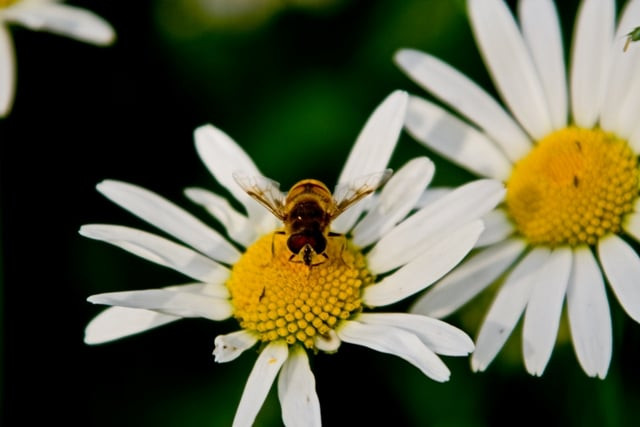Japan bees cook enemy in 'hot defensive bee ball'
Researchers say that the brains of Japanese honeybees may actually be processing and responding to enemy threat.

When confronted with their arch-enemy, the aggressive giant Asian hornet, the honeybees will attack it by swarming en masse around the hornet and forming what scientists call a "hot defensive bee ball" - a move unique to their species.
With up to 500 bees all vibrating their flight muscles at once, the bee ball cooks the hornet to death.
While this defensive maneuver has been known for some time, the mechanism behind it has been shrouded in mystery. But researchers at Japan's University of Tokyo, through study of the bees' brains, have now found that neural activity in bees taking part in the attack picks up.
"When the hornet, the Japanese honeybee's natural enemy, enters a colony, the bees quickly form a 'hot defensive bee ball,' trapping the hornet inside and heating it up to 46 degrees C (115 F) with their collective body heat," said Atsushi Ugajin, a University of Tokyo graduate student.
He said that while the high temperature phase lasts about 20 minutes, it often takes up to an hour before the hornet dies inside the ball.
Set off if bees posted as "guards" at the entrance to the colony detect an intruder, the move evolved because the bee's stingers aren't strong enough to penetrate the hornet's tough exo-skeleton, researchers said.
The research team, whose latest research on the phenomenon appeared in the scientific journal PLoS ONE in mid-March, was astounded by the fact that the collective heat generated by the group, while fatal for the hornet, leaves the bees unaffected.
They were also surprised that the bees used perfectly coordinated teamwork during the process, said Takeo Kubo, a professor at the University of Tokyo graduate school.
"When an outsider enters, the honeybees are immediately on their guard. Then, all at once, they gather to attack," he said.
"So, it isn't one commanding all the rest, we believe in this moment of emergency they're acting collectively."
Curious about why the bees attack this way, the researchers examined their brains and found that neural activity increased in the bees involved with the bee ball, apparently reflecting processing of thermal stimuli.
The group also said that while this discovery may seem to demonstrate that the Japanese honeybee is "smarter" than its European counterpart, this is not the case - it's merely a matter of development in response to environmental factors.
"When a member of the colony, a worker drone, is killed, this is a grievous loss for the hive. Evolution has reacted in this way (for their survival)," said Masato Ono, a Japanese honeybee and hornet expert who was also part of the study.
And many fundamental unknowns remain.
"One of the great mysteries for us is how animals' brains have evolved and how they operate," Kubo said. "This will be for us the next great puzzle to examine."



















COMMENTS
Comments are moderated and generally will be posted if they are on-topic and not abusive.
For more information, please see our Comments FAQ